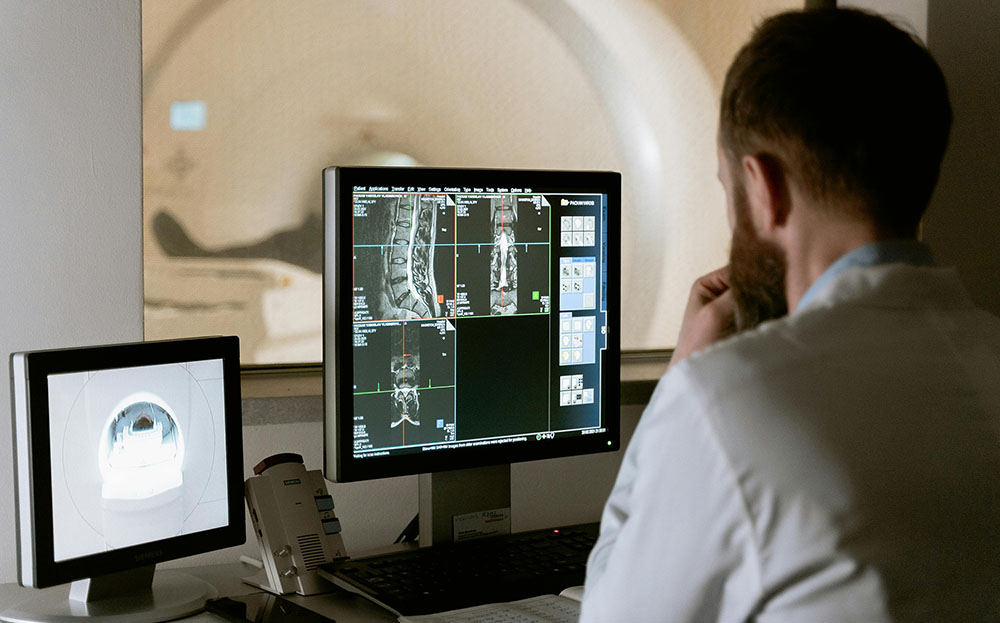The use of assistive technology (AI) in medical and diagnostic imaging is quickly increasing, with some positive effects–such as the ability to detect cancer and other illnesses more quickly than imaging unsupported by AI. If you’re working toward managing a team or teaching diagnostic or medical imaging, you might be interested to find out how this new technology is being implemented and how it might affect you.
Some AI technologies are actually helping researchers detect diseases. A recent study in Sweden showed that using AI technology in mammography helped detect more breast cancer cases while reducing workload compared to double mammography readings without AI technology, according to a new report.
The study analyzed more than 80,000 women who received mammography screenings supported with AI and without. The women had a median age of 54 and moderate hereditary risk of breast cancer or breast cancer history.
In the screening group supported by AI technology, there were 46,345 readings with 244 screen-detected breast cancer cases and 861 recalls. The group without AI had 83,231 readings with 203 detected cancer cases and 817 recalls. While both groups experienced similar recall rates and no difference in the rate of false positives, the readings with AI detected more than 20% more cancer cases.
Beyond the Sweden study, AI technology is also being implemented at Lehigh Valley Health Network that will read imaging studies to look for things like pulmonary embolism, collapsed lungs, and neck fractures.
There is also technology being developed that uses AI in medical scans and could change the way patients normally get second opinions. Monash University researchers have created a new AI algorithm that mimics how scans are read, labeled, and then compared to benchmarks. Traditionally, radiologists read medical scans and mark them up by hand, which can be time-consuming and prone to errors. The hope is that the algorithm will help ensure diagnostic accuracy.
AI technologies can also be used to translate complex medical information. AI-supported software can help translate radiologists’ dictations into recommendations for more patient care and follow-up, and when certain conditions are identified (like cysts, enlarged lymph nodes, etc) the AI technology will automatically establish follow-ups.
If you are currently working in radiology or diagnostic imaging, what do these changes mean for you? While some industries have expressed concerns that ChatGPT and other AI tools could fulfill responsibilities held by some of today’s workers, and thus eliminating their jobs, it’s important to note that in most of these cases, ChatGPT can actually streamline workflows and make workers’ jobs easier, allowing them to focus on more important issues.
Dr. Nina Kottler, associate chief medical officer of Clinical AI and vice-president of Clinical Operations at Radiology Partners, said in a recent interview that ChatGPT could help radiologists translate notes for patients, organize electronic records, and evaluate reports. It could also help write drafts of advocacy letters. She cautions that some AI tools may be subject to the “hallucination effect,” a common issue in which text is generated without credible sources. She advises users to check the sources ChatGPT uses and ensure they’re authentic.
If you’re a future or working medical professional who will be embracing these technologies in your practice, beware of these drawbacks. However, understanding the capabilities of these technologies and how they can lighten your workload can help you work more efficiently.
Are you ready to learn more about the Diagnostic Imaging degree program? Call an enrollment adviser at 608-800-6762 or email at flex@uwex.wisconsin.edu to get more information.
Sources:
https://www.diagnosticimaging.com/view/can-chatgpt-have-an-impact-in-radiology-
https://www.diagnosticimaging.com/view/emerging-ai-advances-in-cardiac-imaging

